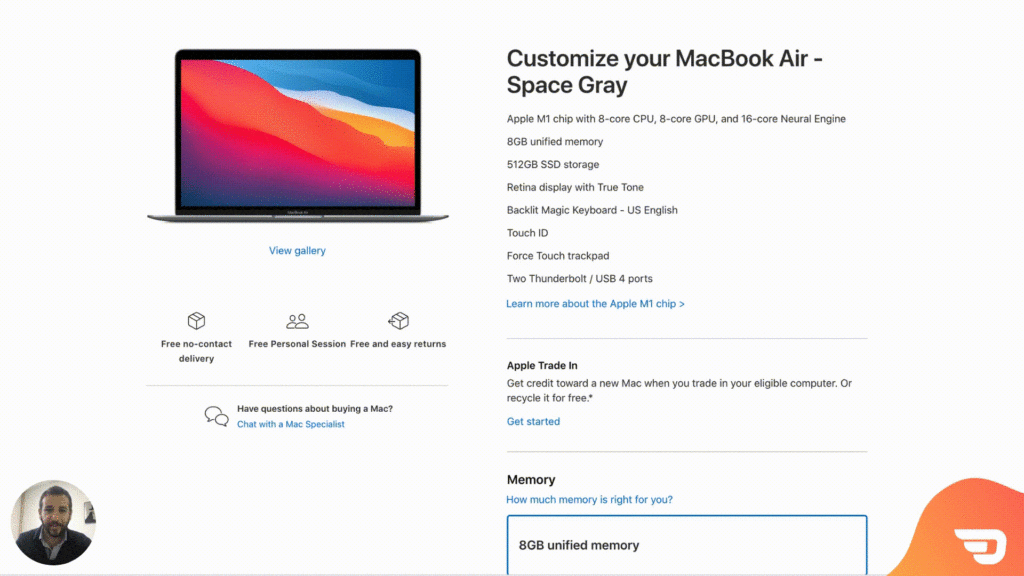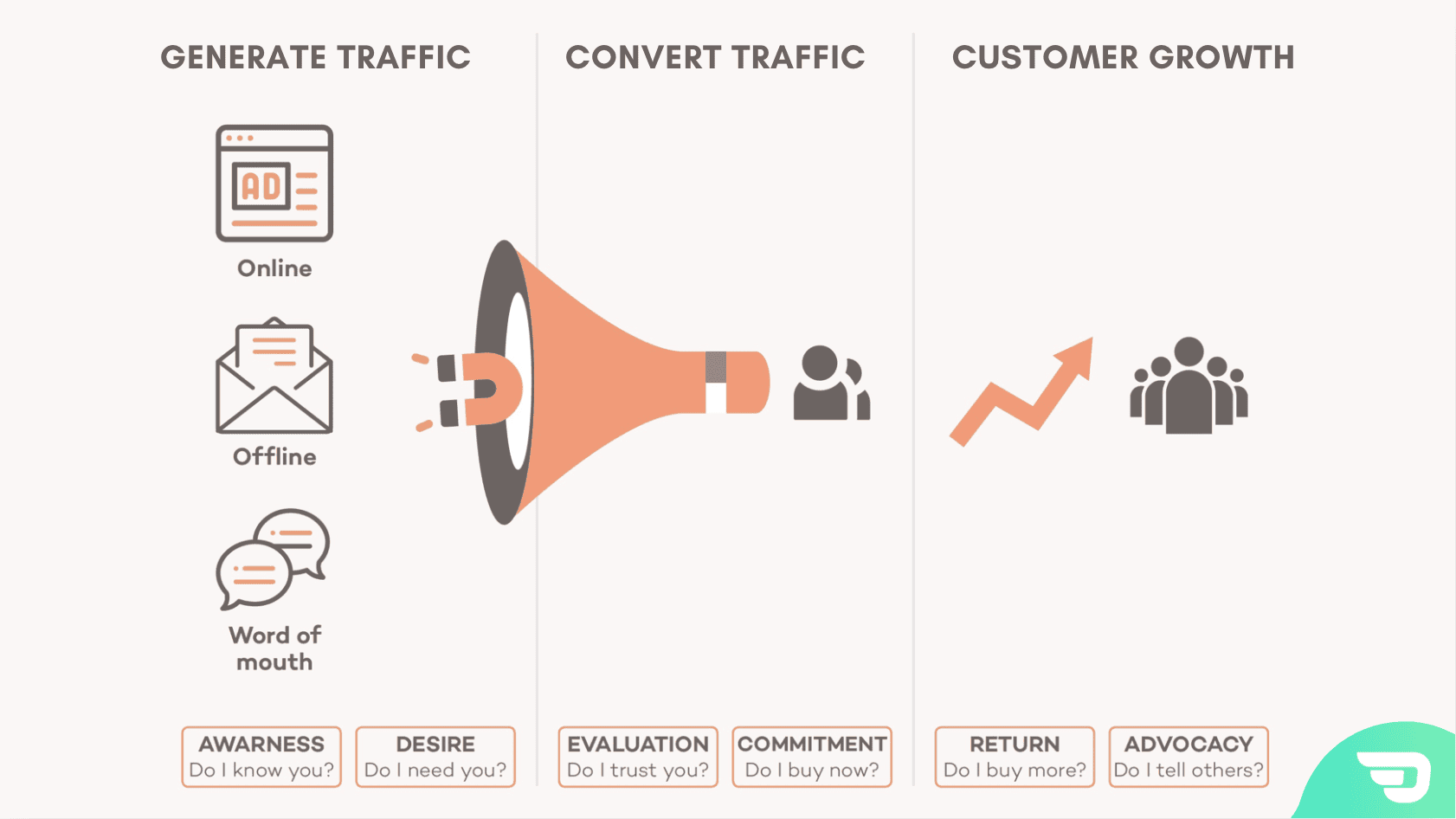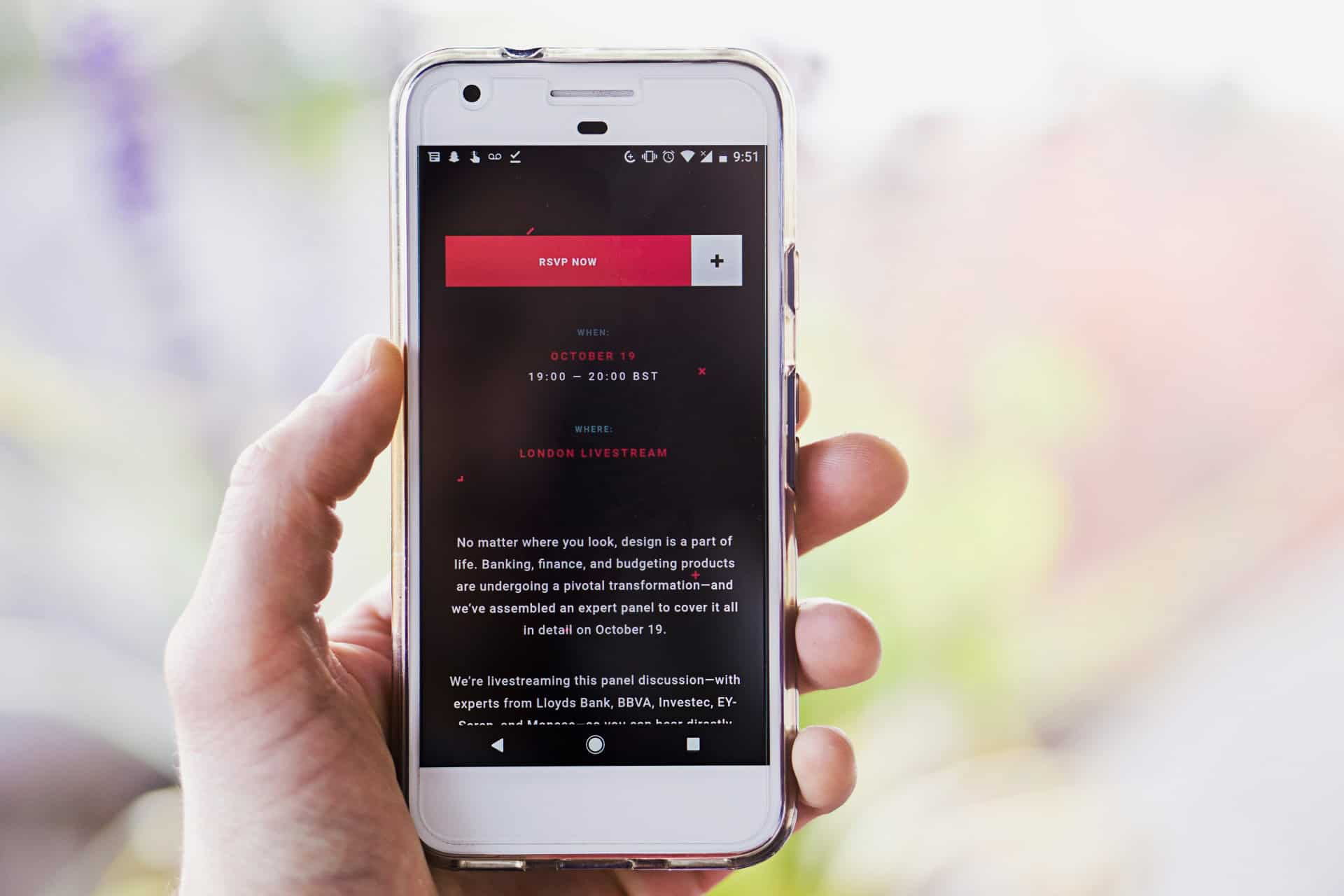
Cross-Selling and Upselling Strategies for Ecommerce (with Examples)
If you’ve been focusing on driving traffic through Google Shopping Ads or Ecommerce SEO and you’ve been improving your conversion rate, you’re ready for the next step: growing the value of your existing customer relationships. In this guide, we’ll explore cross-selling and upselling strategies which help ecommerce stores make more money from each sale.
To give you an idea of how effective these strategies are, Amazon generates 35% of their revenue from cross-selling methods according to Predictable Profits.
This guide explains:
- Cross-selling and upselling definitions and differences
- How successful stores use these strategies
- Which methods work best for different products
- Where to add these options on your website
- How to start using these strategies today
- Prefer Video to Reading? Get the Full 17 Minute Training Video Here
Whether you sell electronics, clothes, food, or services, you’ll find practical examples and steps you can use right away. Let’s look at how to grow your store with cross-selling and upselling that your customers will appreciate.
Understanding the Three Drivers of Growth
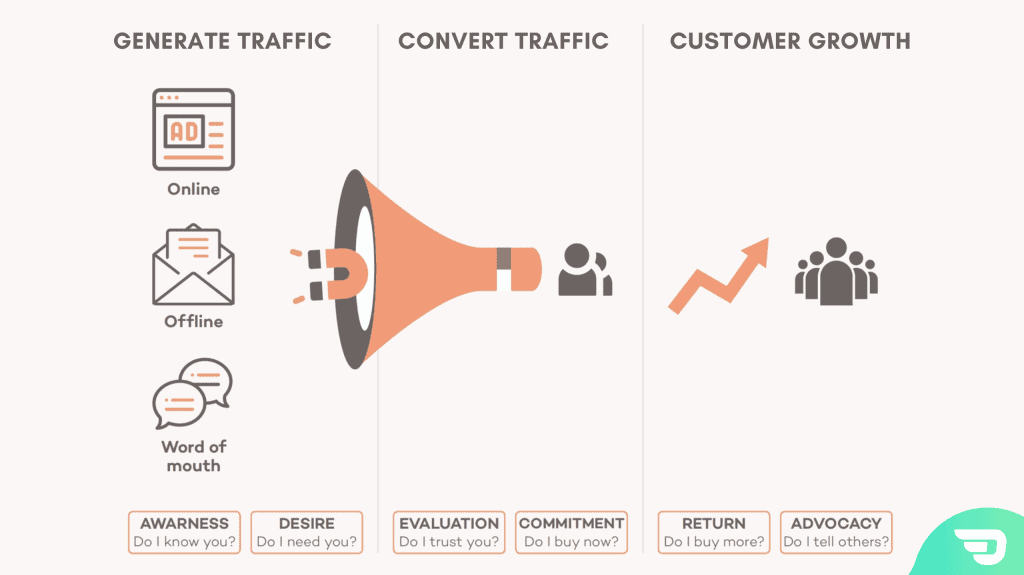
Before diving into specific strategies, let’s understand where cross-selling and upselling fit in your overall growth picture. There are three main drivers of business growth:
- Traffic generation (the number of visitors to your site)
- Conversion rate of visitors to sales
- Customer growth (the value you generate from each customer)
To generate more value from each customer, you need to increase two key variables:
- How much people spend (your average order or transaction value)
- How often people buy (number of transactions per customer per year)
Cross-Selling vs. Upselling: What’s the Difference?
People often use these terms interchangeably, but they represent distinct strategies:
Upselling is offering a more expensive, upgraded, or premium version of an item that a customer has just purchased or is about to purchase. For example offering upgraded storage for a smartphone.
Cross-selling is recommending a different but related or complementary item to the original product. For example, recommending a phone case with a smartphone purchase is cross-selling.
Think of upselling as an upgrade of the same product, while a cross-sell is a whole new purchase.
The Apple Example: Upselling and Cross-Selling in Action
Let’s look at how Apple implements both strategies when selling a MacBook Air:
Upselling Example
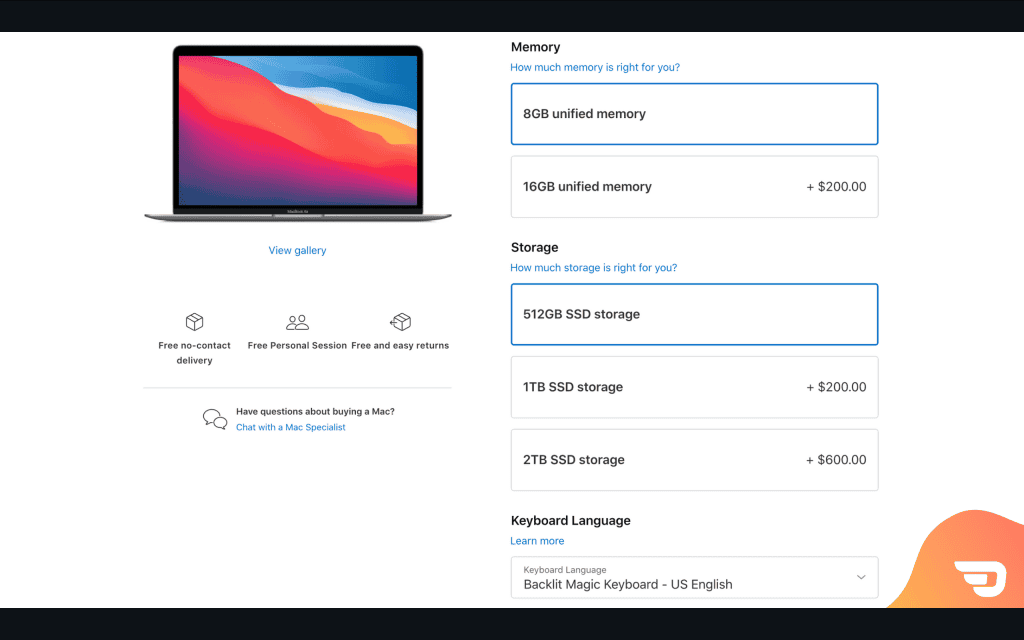
When you select a base model laptop, Apple immediately presents several upgrade options:
- Memory upgrades (from 8GB to 16GB unified memory for $200)
- Storage upgrades (from 512GB base level to 1TB or 2TB SSD)
- Pre-installed software packages
This is upselling – offering a more powerful and expensive version of the same laptop.
Cross-Selling Example
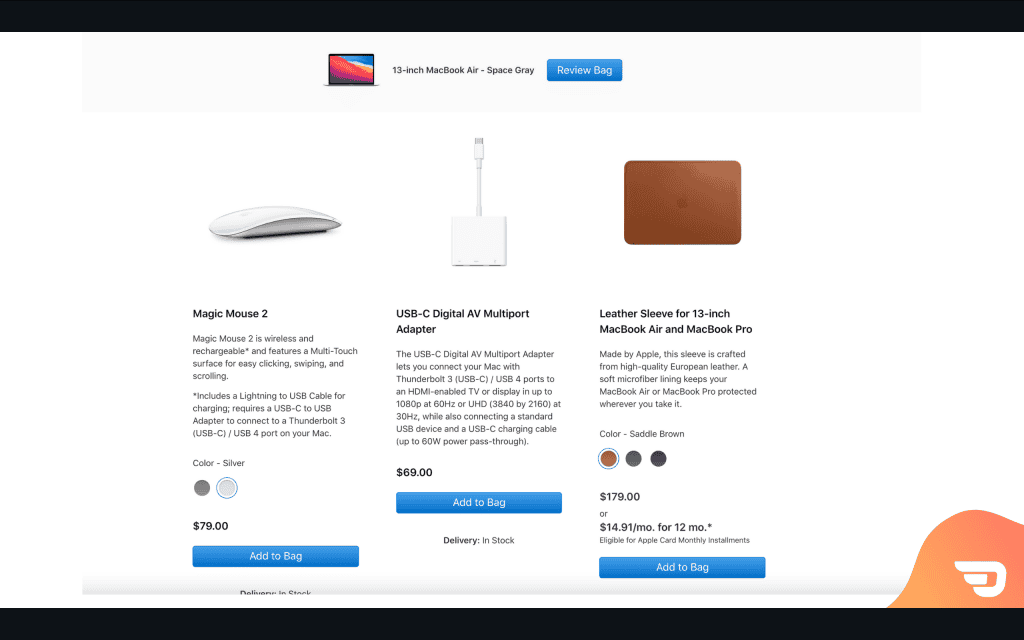
After selecting your upgrades, you proceed to the next screen where Apple presents different but relevant products:
- AppleCare Insurance
- Adapters and cables
- Mouse options
- Protective cases
These are cross-sells – different products that complement your laptop purchase.
Why Cross-Selling and Upselling Strategies Matter
Upselling and cross-selling strategies matter because can seriously increase your average order value and customer lifetime value when added at strategic points in the customer journey. And these strategies can be applied to existing customers who already know you, making them even more effective since it’s much easier to sell to an existing customer than to a new one.
But the benefits aren’t just one-sided. By upselling and cross-selling, you’re guiding customers to choose the right product and have everything they need to enhance customer satisfaction. For example, rechargeable batteries are a perfect cross-sell item for products that don’t include them. Not only does this increase the total order value, but it also prevents customers from receiving an item they can’t use immediately.
Practical Implementation Strategies
Effective Upselling Strategies
Offer an Upgraded Version: Suggest a higher-end version of the product customers are considering. As we saw with the Apple example, offering an upgraded version of the same product is a classic upselling strategy.
Increase Quantity or Size: Offering a larger quantity at a discount can drive upsells, especially well for consumable goods or anything that runs out, wears out, or needs frequent replacement. Native deodorant executes this perfectly by offering a 17% discount on three-pack upgrades of the same product.
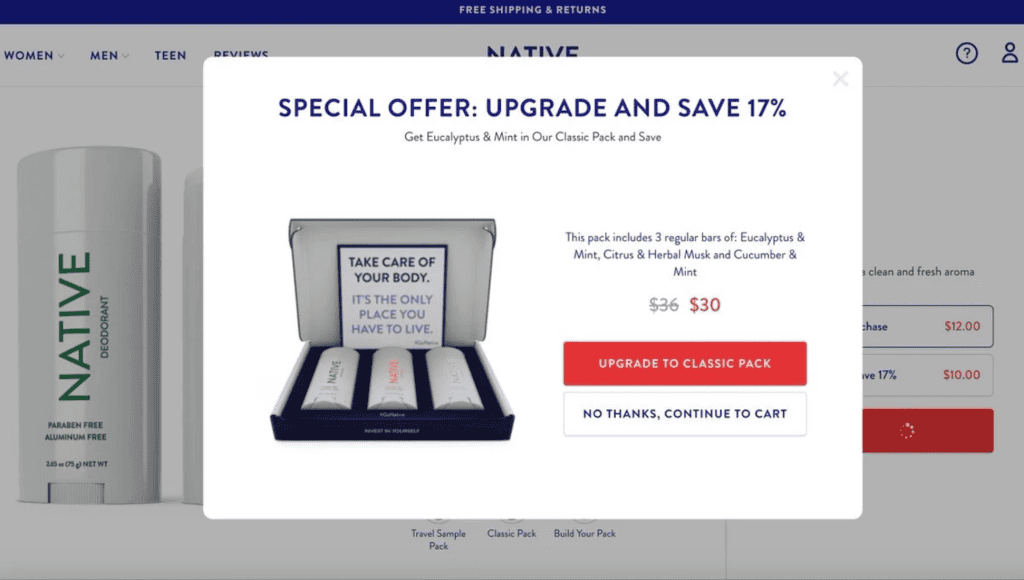
Convert to Subscription: Encourage customers to move from a one-time purchase to a recurring subscription, offering a discount as motivation. For consumable products, customers often appreciate automating their orders, especially when there’s a cost saving involved.
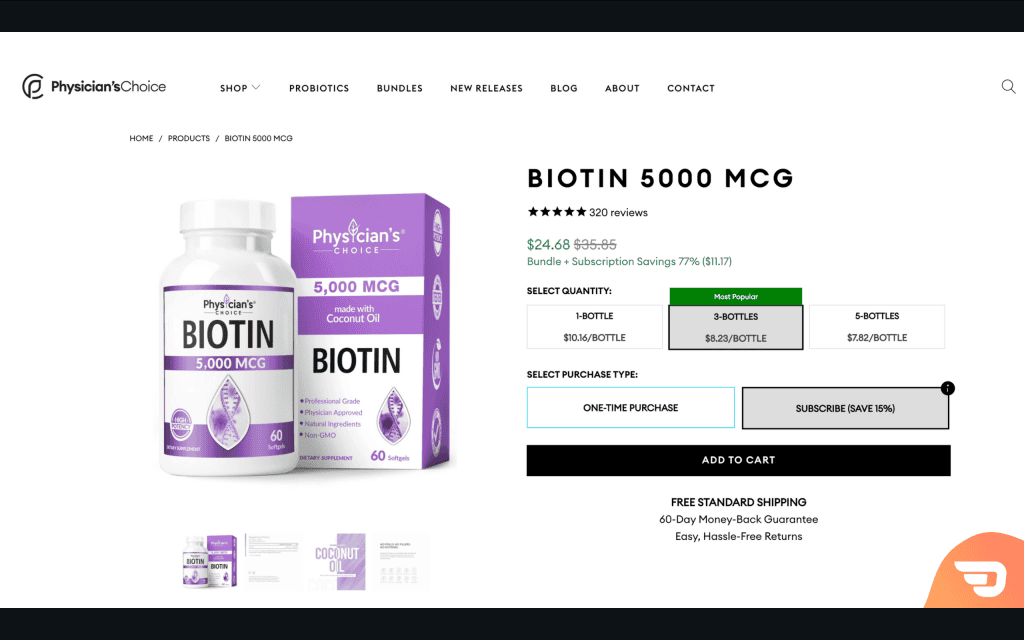
Effective Cross-Selling Strategies
Product Recommendations: When customers view a product on your ecommerce store, suggest related items they might like or need. After all, they’re already interested in buying – making it the perfect opportunity to recommend related products. Amazon mastered this with their “Customers who bought this item also bought” section, which significantly increased their sales when introduced in 2006.

Pro tip: Recommend products that cost 10% to 50% of the main product’s cost so that they’re viewed as complementary rather than substitute items and don’t cannibalise sales.
Strategic Bundling: Combine items that work well together to create a complete package. For example, Amazon often bundles TVs with HDMI cables and wall mounts. Beats by Dr. Dre takes this further by bundling their headphones with speakers, portable chargers, and iTunes gift cards – increasing potential sales by over $190 per bundle.
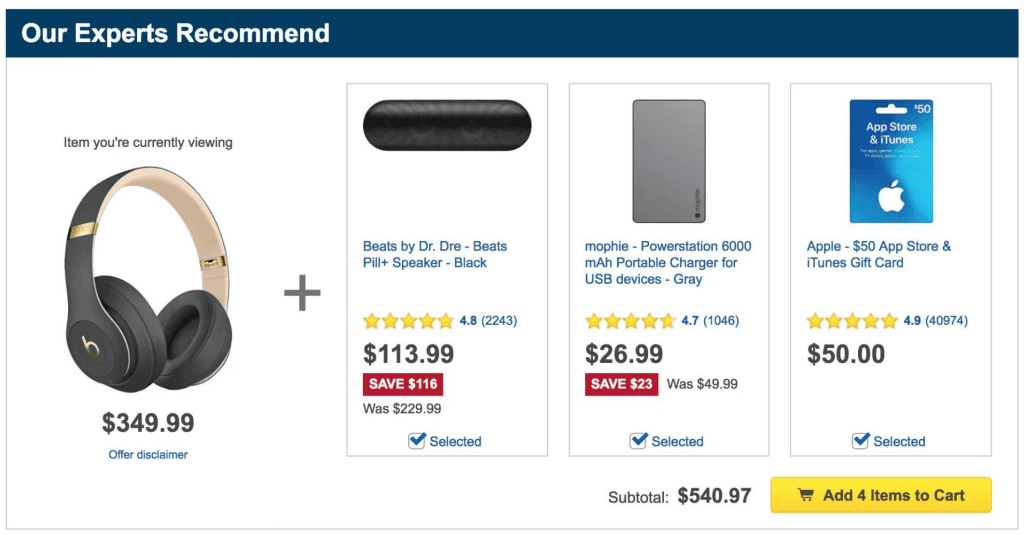
Free Shipping Thresholds: Set a minimum order amount for free shipping to encourage additional purchases. Companies like Hint promote “free shipping on three or more case bundles,” motivating customers to buy more. Some sites even show progress indicators telling customers how close they are to free shipping, encouraging additional purchases.
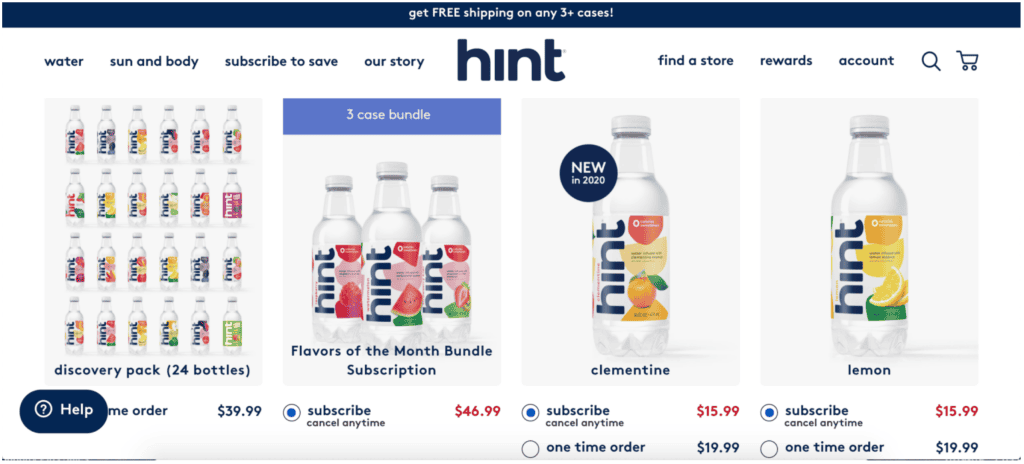
Service Cross-Sells: Offer services that genuinely improve the customer experience while adding value, such as:
- Warranties and insurance
- Coaching or instructional sessions
- Gift wrapping services
Where to Implement Cross-Selling and Upselling
You can implement cross-selling and upselling at multiple stages of the customer journey:
On the Product Page: Before purchase or cart addition, suggest related products on the product page to increase sales early in the buying process – just like Amazon’s “frequently bought together” items.
One-Click Upsell on the Cart Page: Customers on the cart page usually have stronger buying intent, making upselling easier at this stage.
One-Click Post-Purchase Offers: After checkout, present offers that can be instantly added to their order. Since the main purchase is already complete, this doesn’t interrupt the shopping experience, and you have nothing to lose by offering an additional product.
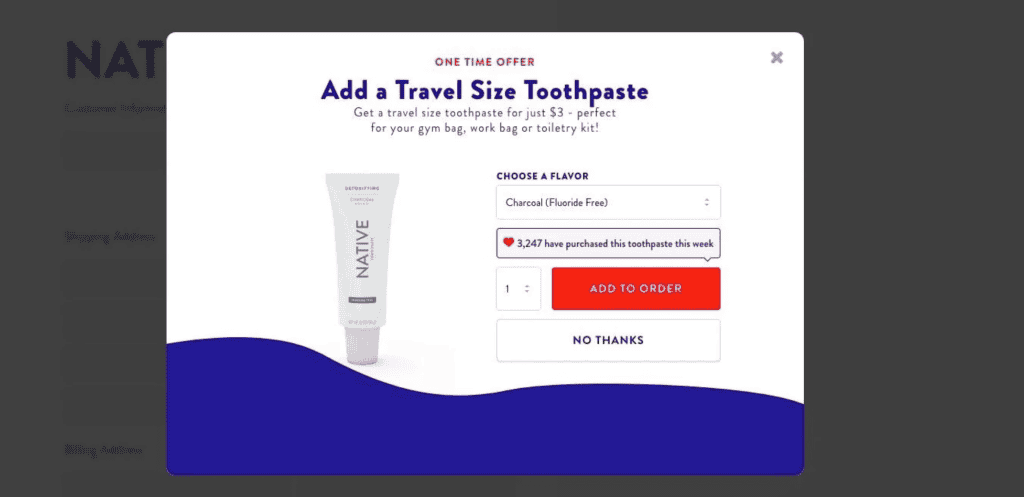
Next Steps: Implementing These Strategies
Ready to get started? Follow these three key steps:
- Consider which product page, cart, and post-purchase strategies to implement first. You can’t do everything at once, so prioritise what makes the most sense for your business.
- Implement the strategies on your site. If you have the technical knowledge, fantastic. If not, seek assistance from specialists who can help you implement the right software solutions.
- Test your strategies to ensure they’re increasing your average order value and adjust accordingly. Don’t expect to nail it on your first attempt. Test, learn, and continuously improve your approach.
- After you’ve implemented upsells and cross-sells you can move onto ecommerce customer retention strategies.
Even after customers leave your site, you can continue leveraging these strategies through email marketing, inserting upsells and cross-sells into ecommerce email flows. The key is to start small, test thoroughly, and build on what works for your specific business and customers.
Ready to grow your customer value?
Start by choosing one strategy from this guide and implement it today. Remember, the perfect is the enemy of the good – it’s better to start small and improve over time than to wait for the perfect implementation.
Get the Full Training Video About Upsells and Cross-Sells (FREE)
